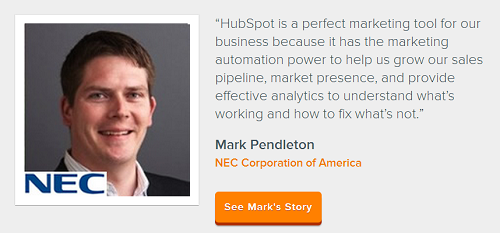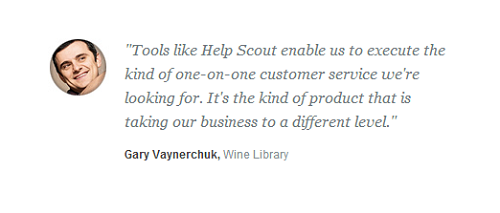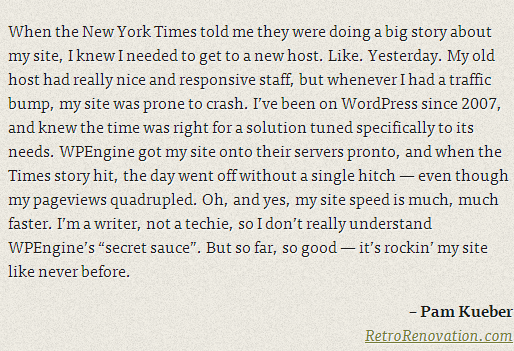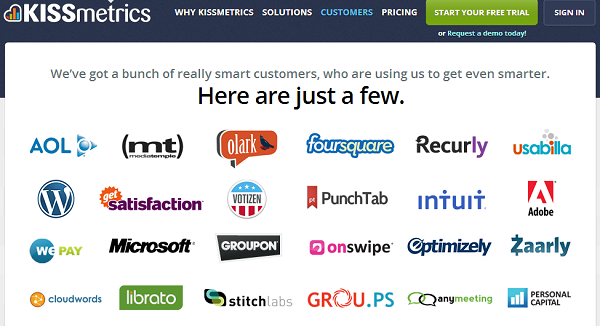Smart marketers know that social proof is the marketing tactic for easing the minds of worried customers.
In 2013 and beyond, social proof will gain in importance because customers are becoming more informed all the time. With the power of the internet at their fingertips, customers can know an immense amount of information about your business before ever speaking with a salesperson. Check out these two statistics revealed by consumer research around American consumers:
- Over 70% of Americans say they look at product reviews before making a purchase. [source]
- Nearly 63% of consumers indicate they are more likely to purchase from a site if it has product ratings and reviews. [source]
Needless to say, it’s in your best interest to effectively utilize social proof. But that’s where the problem is: not all social proof is created equal. Today, we will look at 7 things you MUST understand when utilizing social proof in your marketing efforts:
1. Negative Social Proof is Horrible for Persuasion
For a long time, business owners have known that “urgency” is an effective persuasion tool for getting people to take action. The big mistake they often make is that they use negative social proof to increase the effectiveness of their call-to-action, which could be destroying their conversion rates!
Psychologists Noah Goldstein and Steve Martin (authors of Yes!) observed the effects of signs posted in the Arizona Petrified Forest to prevent theft. They tested 3 different signs, one of which included negative social proof.
Their findings were shocking. The sign with the negative social proof was not only unable to reduce theft, it actually increased the likelihood that people would steal the petrified wood from the forest! In this case, the sign read:
“Many past visitors have removed the petrified wood from the park, destroying the natural state of the Petrified Forest.”
The researchers found that this sort of sign encouraged more stealing (it tripled the amount of theft) because it was evidence that many other people were already stealing from the forest. Instead of discouraging people, it made them more confident that stealing was “okay.”
If your sales page warns potential customers of the dangers of missing out on your product, but supports your claims by citing negative social proof, you’re in trouble. How do you know if you’re using negative social proof? Check out the following failed advertising campaigns that were mentioned in the study:
- “4 years ago, over 22 million single women did not vote.”
- “This year Americans will produce more litter and pollution than ever before.”
- “Your heritage is being vandalized every day by theft losses of petrified wood of 14 tons a year.”
You’ll notice that they try to claim that the activity is “wrong” but do so by saying that lots of people are doing it, the key trait of negative social proof. Positive social proof is the only way to go. As a matter of fact…
2. Positive Social Proof is More Influential than Saving Money
In a fascinating environmental study published in the Washington Post, researchers examined the effectiveness of signs (yet again!) on persuading customers to use less energy in the summer by turning on fans instead of air conditioning. Before we get into the results and implications, check out the 4 types of signs they tested:
- Sign #1: Informed the customer that they could be saving $54/month on their utility bill.
- Sign #2: Told customers that they could prevent the release of 262 pounds of greenhouse gasses every month.
- Sign #3: Encouraged customers that saving energy was a socially responsible thing to do.
- Sign #4: Let customers know that 77 percent of their neighbors were already actively using fans to save energy.
Which sign do you think was the most effective at getting people to use less energy? Surprise, it was sign #4 – the one that invoked the positive social proof. That means that in this instance, the positive social proof was more persuasive than saving money (sign #1), protecting the environment (sign #2), and making responsible choices (sign #3), all of which are positive behaviors, but none of which could stand up to the power of group influence.
This lines up quite closely with some related pricing research on savings; in particular, a Wharton study that shows how customers are growing more and more concerned with “saving time” and headaches over saving money.
Bottom line: Positive social proof should be placed prominently on your most important sales and landing pages. Use it when customers are getting close to making a purchase.
3. Social Proof Works Better with Pictures
Testimonials are one of the most persuasive forms of social proof out there, but how can you make them more believable? (Just because a testimonial is true doesn’t mean people will believe it.) According to new research on increasing “truthiness,” the best way is to put a face to the words. Pictures were found to increase trust among all participants, even when the photos were “nonsensical.”
We already know from previous research that people like looking at human faces on the web, but now it’s been made clear that testimonials are more likely to be believed when they are accompanied by a corresponding picture. If you’re going to quote a customer or brand advocate as a form of social proof, be sure to complement their praise with a high quality photo:
Be sure to use high quality photos, and make sure that the participants look inviting and friendly. (A smile is always nice!) For maximum effectiveness, make the call-to-action blend with the social proof:
You’ll notice that the button says, “Join these great companies by signing up today,” utilizing persuasive copy that reflects the social proof on the page.
4. People are Influenced by Similar People
Doesn’t it frustrate you when you’re being lectured to by someone who can’t possibly relate to what you do?
You’re not the only one. Research surrounding the concept of implicit egotism has shown that, despite what we often say out loud, most people subconsciously like things that “resemble” them in some way. These studies have found that when it comes to valuing the opinions of others, our brains place more weight on those people we deem to be the most like us.
When utilizing techniques like testimonials and case studies, be sure to avoid generic “Great service!” quotes like the plague. Nail down your buyer personas to the most particular detail and capture a moment where a customer describes a very specific (and very real) pain that they solved with your product/service.
Although invoking an association with “their peers” is a good general way to go about this…
…the research says that the closer you can hit to home, the more effective it will be.
Try to find a customer that truly represents (in the best way) what your ideal customer looks like. Emphasize how your company solved their pains and headaches, and then other customers will be able to relate to them.
This is due to the mirror neurons in our brain. We feel connected when we can envision ourselves in the same situation. Another way to capitalize on this customer description is to utilize effective storytelling in your social proof…
5. Stories Deeply Connect with Customers
You likely guessed that interesting anecdotes (or “customer stories”) are a great way to sell a product, but it’s likely that you are vastly underestimating their effectiveness. Think about it this way: what would persuade you more, a 5-star review or a detailed account of how a certain product was able to turn someone’s business around? Both are “great” forms of social proof, but one is far more powerful than the other.
According to psychologists Christopher Chabris and Daniel Simons (authors of The Invisible Gorilla), stories are persuasive and more trustworthy than statistics because individual examples lodge in our minds, but statistics and averages do not.
Our ancestors lacked access to huge data sets and experimental methods. By necessity, we learned from specific examples, not by compiling data from many people across a wide range of situations.
The summary of the research on storytelling points to two big conclusions:
- Stories work because our brains are primed to heed their advice.
- Stories are persuasive because they are able to slip in under our radar and “transport” us to the tale being told. (Researchers say we tend to imagine ourselves in other people’s shoes during a story.)
Here’s a good example:
WPEngine customer Pam Kueber relates a tale that all webmasters can relate to: fearing that your site will crash just when you’re getting a great feature. It’s why we spend so much time capturing customer stories for our site. We know people will trust a story over a little widget that claims our service is “5-stars” or “A+.” There’s another way to make these case studies more effective, though…
6. Authority Rules!
You probably already know that “influencers” are sought after as sponsors because they are so, well… influential. But why does everything they touch seem to turn to gold in the eyes of their followers? We find in the answer a very interesting cognitive bias known as the halo effect. Psychologists have found that we are likely to judge a person’s opinion based on our overall impression of him or her.
This explains why “influencers” seem to have the Midas touch. Since they already have an established reputation, anything else they involve themselves with is seen in a better light by association. This is why a testimonial from an influential person is one of the few alternatives that can help you boost the effectiveness of your social proof. You can use a notable person in your industry:
…or you can cite notable mentions/customers who trust and believe in what you do:
Are you implementing the halo effect in your social proof?
7. Better to Have No Proof Than Low Proof
In a fascinating post at the Visual Website Optimizer blog, author Anne Stahl makes the case that certain forms of social proof (in this case, social media shares) can hinder the goal of the page if they make it seem unpopular. According to Anne:
“The slight decrease in engagement suggests that the primary problem with this social network integration was … the low ‘likes’ rather than the distraction factor.”
That is, when people come across a page (your sales page, a blog post, etc.) that has very low levels of social media proof, they may begin to think of it as less trustworthy. This makes sense, because in a world where social media buttons clog up our screens, people often look toward share counts as signs of overall popularity (which isn’t always true).
Having said that, it’s smarter to eliminate this “social media proof” from important parts of your website if you find the counts are particularly low.
Rand Fishkin also covers how a lack of social proof can decrease conversions as people assume that your company either:
- Isn’t trustworthy
- Is too new to place their faith in
- Isn’t being used by anyone because it sucks
If you’re lacking in social proof at the moment, go for the “clean and uncluttered” look. People won’t hold it against you.
Your Turn
What other tips on using social proof do you have? Let us know in the comments!
About the Author: Gregory Ciotti is the marketing guy at Help Scout, the invisible email support software for startups and small businesses. See why Help Scout is awesome for companies that love their customers by checking out our help desk software comparison resource.







Comments (18)